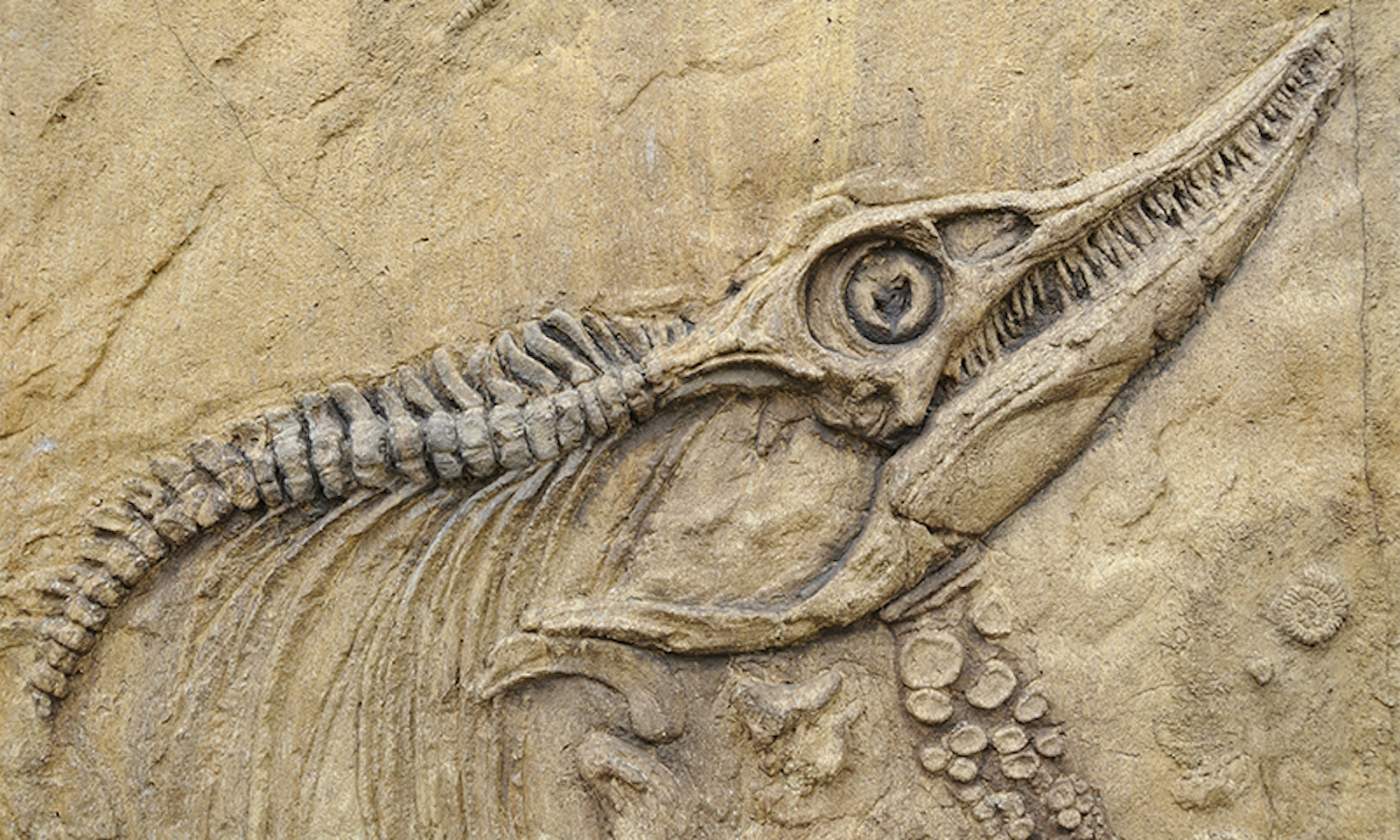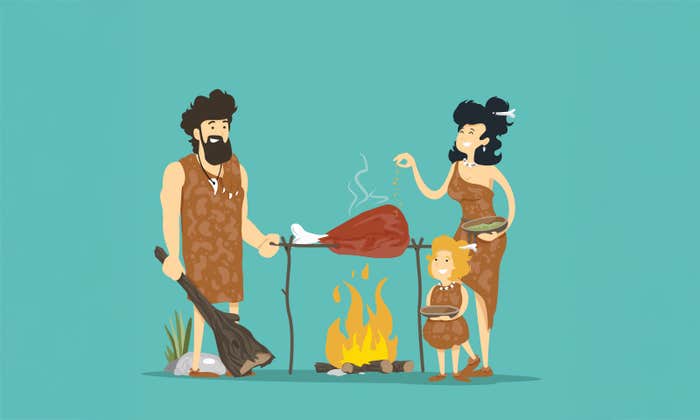On a Thursday at 9:30 a.m., Jay,* a longtime staff preparator at the Southern Museum,** had a list of things to do. He wanted to search a bag of matrix—the name for the rock surrounding fossilized bone—for microscopic fossil mammal teeth and start gluing them in place on their tiny jaw; deliver light bulbs to the museum’s glass-walled preparation lab; replace a microscope light bulb in the specimen research space; check the lab’s air filtration system; buy a more powerful microscope lens (to facilitate his work on the mammal jaw); make a storage jacket for a fossil horse skull; mold a fossil squirrel skull to produce a replica—“and I have to finish my coffee.”
This diversity of tasks, workplaces, and even ranges of vision—from searching for teeth under a microscope to inspecting the lab’s huge air filtration apparatus—indicate the many kinds of knowledge, skills, and priorities involved in producing and maintaining specimens. Indeed, one of the key processes of preparing knowledge is preparing evidence. We know from studies of scientific practice that the work of distinguishing evidence from “noise” or “background” is complex, situated, and not obvious. Preparing evidence involves deciding what materials or observations are relevant, what form they should take, and how to achieve that form. What many people don’t realize is that these decisions often fall to skilled individual practitioners—many of whom are not scientists—such as Jay, who make in-the-moment judgments based on their expert observations and then apply skillful actions to pursue their expectations of the evidence.
Jay turned barely-visible chunks of preserved bone into a researchable specimen of a long-dead mammal.
Reconstructing fragmented fossils, like Jay’s mammal jaw, is technically difficult, epistemically loaded, and strikingly quotidian. Fossils almost always arrive in the lab in pieces, but without all their pieces. So which fragments preparators reattach—and where they reattach them—is rarely clear and requires judgment calls. Even defining what a fragment is relies on expertise.
Jay began work on the mammal jaw by searching a small box of sand-grain-size matrix under a microscope, hoping to find more slivers of teeth to match the jaw that he and colleagues had discovered during a collection trip a few months earlier. As I watched, Jay triumphantly lifted a barely visible “frag” (fragment) of fossilized tooth enamel out of the matrix with tweezers. He inspected it and guessed that the frag might “bridge the gap” between two other pieces he’d found, thereby making it possible to assemble all three pieces into one reconstructed tooth.
Removing matrix from fossils is a process of defining them in their current state, while repairing and reconstructing fossils involves, as the prefix “re-” implies, returning a specimen to its appearance in life. That achievement is, of course, impossible, but making a tooth look complete instead of shattered is considered a step closer to seeing that tooth as it looked when it was part of an animal. Soon after finding the frag, Jay decided to stop searching because the loose matrix contained only “tooth dust”—pieces of enamel that he judged too small to reconstruct or be scientifically useful.

Jay planned ahead, thinking through his decisions about how to best reunite the two pieces of the jawbone and, later, the teeth. First, he purposefully left finger-size hunks of matrix attached to the half-centimeter-long jaw pieces, as “handholds” to help him manipulate the tiny fossils while gluing them together. He would prepare away the handholds after he finished the repair. Next, he evaluated the options for adhesives. He decided on cyanoacrylate for its faster and stronger bond than other glues, which are important benefits when working with microfossils. The downside is that “you only get one shot,” he said, because cyanoacrylate bonds instantly and it would be nearly impossible to undo the join on such small bones. Positioning the pieces by their handholds and holding his breath, Jay delicately placed cyanoacrylate on the nearly invisible gap between them, adhering the two pieces.
With the jaw pieces reunited, Jay “built” each microscopic tooth, placing its frags in a base of soft clay to hold them while he aligned their broken edges. He put a drop of cyanoacrylate on a single paintbrush hair and allowed capillary action to suck the glue into the crack between two frags, where it bonded them together. He repeated these actions for each frag in each tooth.
Finally, based on his knowledge of anatomy and assessment of which broken edges corresponded, Jay lined up the rebuilt teeth in a small box in the order he thought they belonged on the jaw. He spent a long time getting ready to glue the teeth to the jaw, even though—or perhaps because—the task would only take an instant. But then he paused, and decided that he needed a few quiet days to best set up this final, stressful, “one-shot” reconstruction. He put the task “on standby” and eventually completed it a few weeks later.
Jay’s in-the-moment assessments and reactions to the situation resemble the reflection-in-action that craft workers and other experts practice. These judgment calls, based on expertise, experience, goals, and values, shaped how Jay conducted the common tasks of defining and reconstructing fossils, and thus how that mammal jaw and its teeth look. We should remember that teeth are scientists’ primary diagnostic feature for mammals. By saving the tooth frags (and not the tooth dust) and by reconstructing the gross morphology of the teeth and jaw, Jay turned barely-visible chunks of preserved bone into a researchable specimen of a long-dead mammal that lived alongside dinosaurs.

Later that day, Jay repaired another fossil, but not one fresh from the field. It was a holotype specimen of a small proto-horse species that had been first prepared in the 1950s. (A holotype or “type” specimen is the individual that scientists designate as the permanent defining example of its species.) A visiting scientist had found the narrow, palm-length skull lying in pieces in its storage box, so he brought it to Jay. Glue from many previous repairs coated the pieces’ broken edges, hiding their shape.
“I don’t see any obvious joins,” Jay told me. “But that doesn’t mean there aren’t any.” Preparators’ power over a specimen’s appearance includes their ability to not apply techniques, such as by not identifying or attaching broken pieces. When I suggested that one frag belonged to the skull’s eye socket, Jay disagreed, saying wryly, “Put it there if you want it to be a new type,” meaning a new—and invented—species. Then he suggested gluing an unattached canine tooth on the end of the skull’s nose like a horn. These jokes highlight preparators’ power to decide how a specimen looks, such as by their judgments of if and how broken bones fit together.
After many failed attempts to match the loose pieces with the skull’s broken edges, Jay decided to consult the specimen’s published description and photographs from the 1950s. I have seen preparators check scientific papers only a few times; this unusual step reflects how stumped Jay felt about how to reassemble this skull. Based on the paper’s text and images, Jay identified and adhered several pieces. He also found traces of glue on a canine tooth fragment and a matching glue-lined edge on the skull, indicating a former join. So he adhered the tooth there, even though it was absent in the published photos. There is a kind of circularity in this story in that a preparator prepared this specimen, then a researcher described it in a publication, and then a later preparator (Jay) repaired the specimen to match the publication.
Fossils almost always arrive in the lab in pieces, but without all their pieces.
Suspecting that the skull’s damage had resulted from rolling around inside its box, Jay decided to build a custom storage container for it. Eventually he landed on a “clamshell jacket” (something he learned how to make at a conference workshop led by another preparator), in which two cradles fully encase a specimen.
But when Jay set the skull in its finished half jacket, he realized that adding a top half would make the specimen too tall to fit in its storage drawer. He wanted to keep the skull in that drawer because its skeleton was in there too and he didn’t want them to become disassociated. It was also important to him (like all museum staff) to minimize the space each specimen takes in the museum’s overcrowded collection. So Jay declared the half jacket to be a finished cradle. The skull “is already more protected now than it was,” he said with a shrug. Jay’s lengthy experience as a preparator as well as consultation with a coworker informed his evaluation of which design would best achieve his goals for this fragile and important specimen. The constraints and many possible forms of storage support alone point to the many embedded values and contingencies for a specimen. The cradle, after all, becomes part of the fossil’s history and future.
No one had told Jay what to repair about the skull or to change the specimen’s storage. He followed best practices he’d learned from experience, not from published instructions. He decided to reattach as many frags to the fossil as possible, including ones not pictured in its published description. He chose to invest time in making a cradle in hopes of preventing damage and reducing future preparators’ time spent repairing this specimen. In that sense, Jay, too, becomes part of the fossil’s history and future. ![]()
*Jay is a pseudonym. I chose to assign pseudonyms to all the people and institutions in this study.
**This is also a pseudonym. The two museums, which in my book I call the Northern Museum and Southern Museum, are valuable for their significant vertebrate fossil collections, respected preparators and scientists, wonderful fossil exhibits, and glass-walled labs where visitors can watch preparators at work.
This article was originally published in MIT Press Reader.
Lead image: 501room / Shutterstock




























